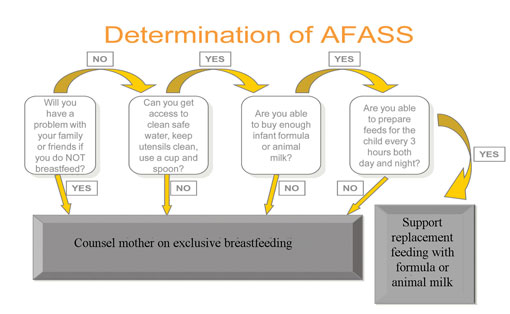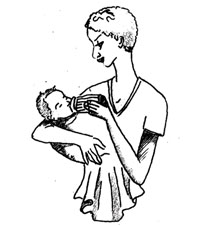27.6 Breastfeeding options for PMTCT
Exclusive breastfeeding is defined as feeding only breastmilk to the infant for the first six months of its life (the mother’s milk is the sole source of nourishment). Exclusive breastfeeding is NOT recommended for HIV-infected women. However, the alternatives, using formula or animal milk, are not always a viable option and in such cases breastfeeding should be used. Exclusive breastfeeding should be avoided if the following criteria, established by the WHO and called the AFASS criteria, can be met:
- Acceptable: replacement feeding for breast milk should be acceptable by the family and others who are close to the family.
- Feasible: the mother has access to clean and safe water for cleaning utensils such as feeding bottles and teats.
- Affordable: the family has to be able to buy formula milk or animal milk.
- Sustainable: the mother is able to prepare feeds for the child as frequently as recommended.
- Safe: the formula milk should be safe for the health of the infant.
Figure 27.3 illustrates the AFASS decision pathway used to determine how an HIV-infected mother should feed her baby.


When replacement feeding fulfils AFASS criteria, avoidance of all breastfeeding by HIV-infected women is recommended (Figure 27.4). At six months, if replacement feeding is still not acceptable, feasible, affordable, sustainable and safe, continuation of breastfeeding with additional complementary foods is recommended, while the mother and baby continue to be regularly assessed. All breastfeeding should stop once a nutritionally adequate and safe diet without breastmilk can be provided.
27.5.2 Single-dose Nevirapine, and other ARV options for PMTCT
